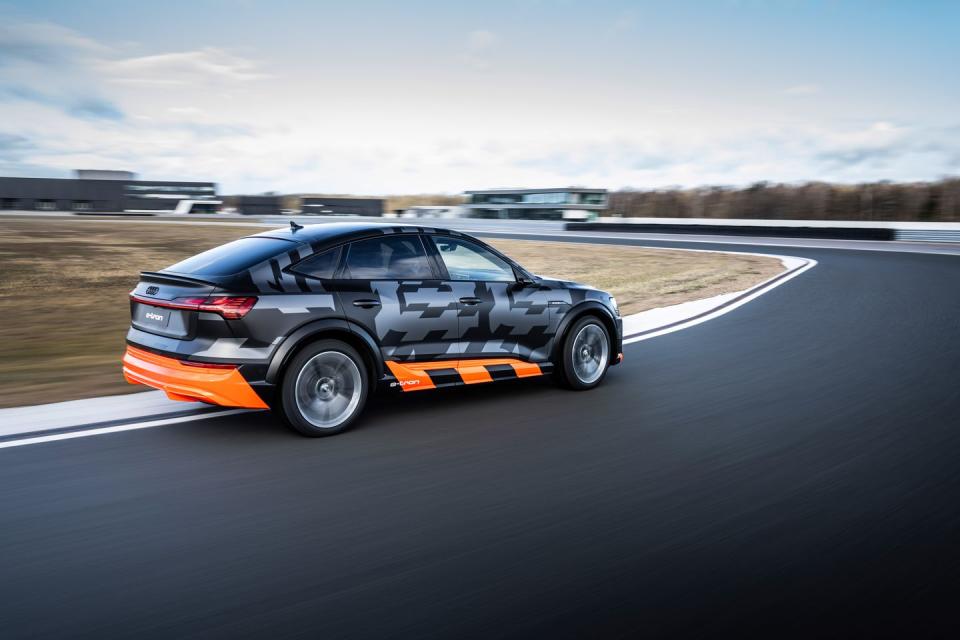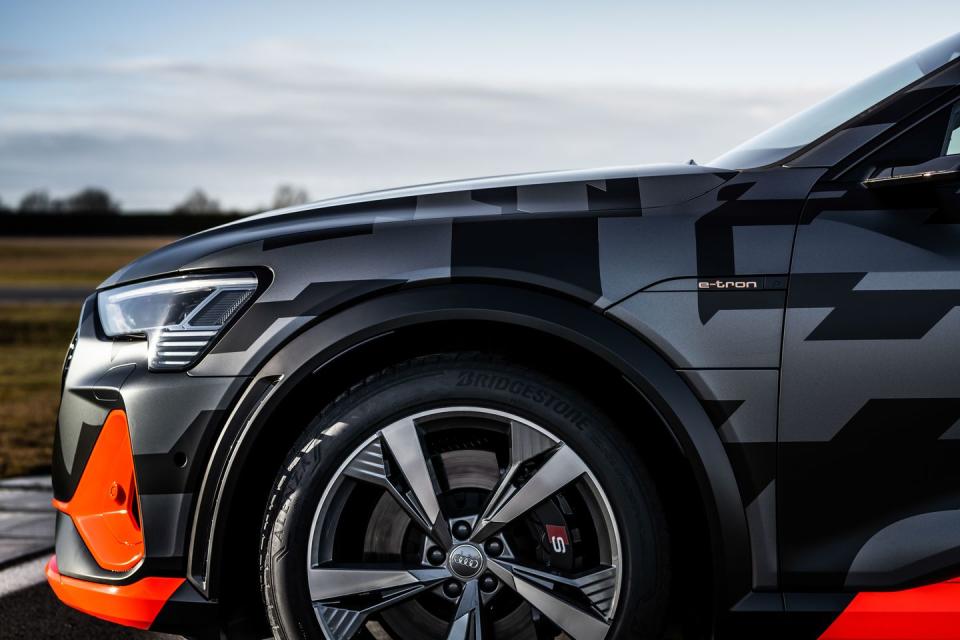All the Right Moves: 2021 Audi e-tron S Sportback

Audi introduced the Quattro all-wheel-drive system 40 years ago, and with the coming wave of electrification the brand is advancing and introducing new capabilities made possible by electric motors. The next generation of Quattro arrives with the yet-to-be-revealed 2021 Audi e-tron S Sportback, which has three electric motors instead of two.
Three's Company
Audi's new Quattro system for the new S variant of e-tron requires shuffling the regular e-tron's motors around. Essentially, the e-tron's motors switch places in the S version. The standard e-tron's 201-hp rear motor moves to the S model's front end. The regular e-tron's 172-hp front motor moves to the rear end and is joined by an identical motor. Instead of a rear differential, the difference in wheel speed is managed by the two electric motors in the rear end. Each rear motor turns an individual wheel, which allows for them to mimic the characteristics of any type of differential, including a torque-vectoring differential. Total power comes in at a healthy 496 horsepower and 718 lb-ft for up to 8.0 seconds in Sport mode. That's a gain of 94 and 228 over the standard e-tron and is good for a claimed 60 time of 4.4 seconds, a meaningful improvement over the 5.3 seconds we measured in a production e-tron.

What's Your Vector, Victor?
Torque vectoring is a pivotal [Ahem—Ed.] tool that can help a vehicle turn through corners by delivering more torque to the outside wheel. This creates a steering effect on the rear axle, increasing yaw to help a car rotate through a corner. In aggressive cornering, the outside rear motor can deliver up to 162 lb-ft more torque than the inside wheel. Audi claims the system reacts in a quarter of the time it would take a mechanical system to respond.
During the brief encounter with the new system in e-tron S Sportback prototypes, it worked extremely well. Much of our time on Audi's short handling course was spent sideways in a lurid drift. We're not quite sure what world Audi lives in where electric SUV hunchback things must drift, but it's a world that we'd like to live in.

The e-tron S Sportback's extra power and trick Quattro system helps it to execute massive, smoky, winter tire-shredding drifts with precision. Drive it less like Ken Block, and the system works to ensure that the appropriate wheel lacks traction. Since the rear motors work independently, they can power one wheel without affecting the other. If one wheel is on ice and the other on pavement, only the motor with traction will provide the driving force. In the front axle, the motor works through an open differential and relies on the brakes to mimic a limited-slip diff, ensuring the front axle can help even in the worst conditions.
Easy to Handle
Even if you're not Ken Block, there are advantages to the new Quattro system. In slippery conditions, there's a feeling of effortless acceleration. Despite weighing around 6000 pounds, the e-tron S has the responsiveness and handling chops of a lighter vehicle. Running the e-tron S through a slalom course proved that this elephant can dance.

Other changes relative to the e-tron include software tweaks that utilize more of the battery. While the battery's storage capacity remains at 95.3 kWh, the S model uses 91 percent of the battery's potential versus the non-S's 88 percent.
This three-motor setup makes us think that four-motor configurations are on the horizon. How the additional motor might affect range isn't being revealed, and Audi does not even have a definitive timeline for the S Sportback to arrive in the United States. The standard e-tron Sportback goes on sale this summer. Stay tuned for more details about the Audi e-tron S Sportback closer to its official reveal at the Geneva auto show.
You Might Also Like

 Yahoo News
Yahoo News 
